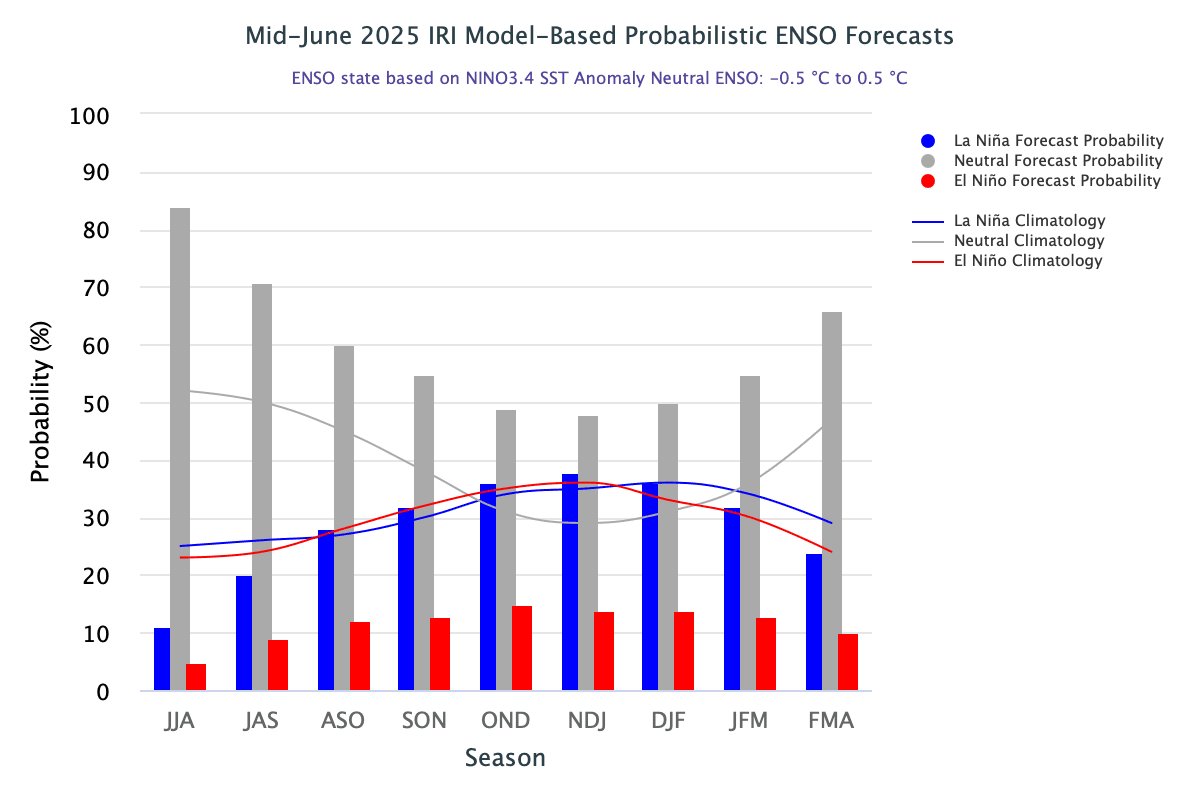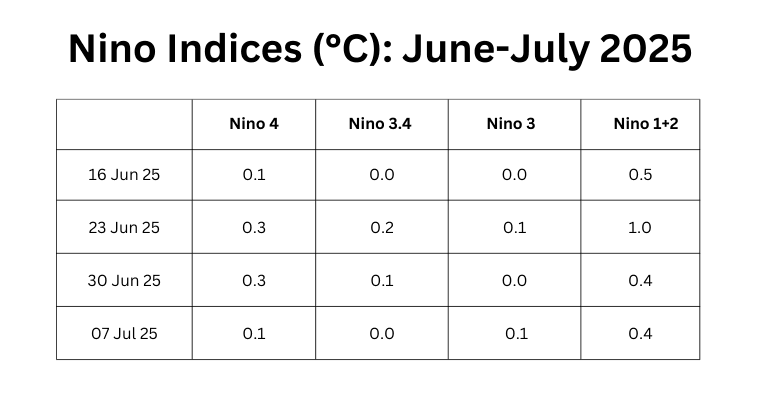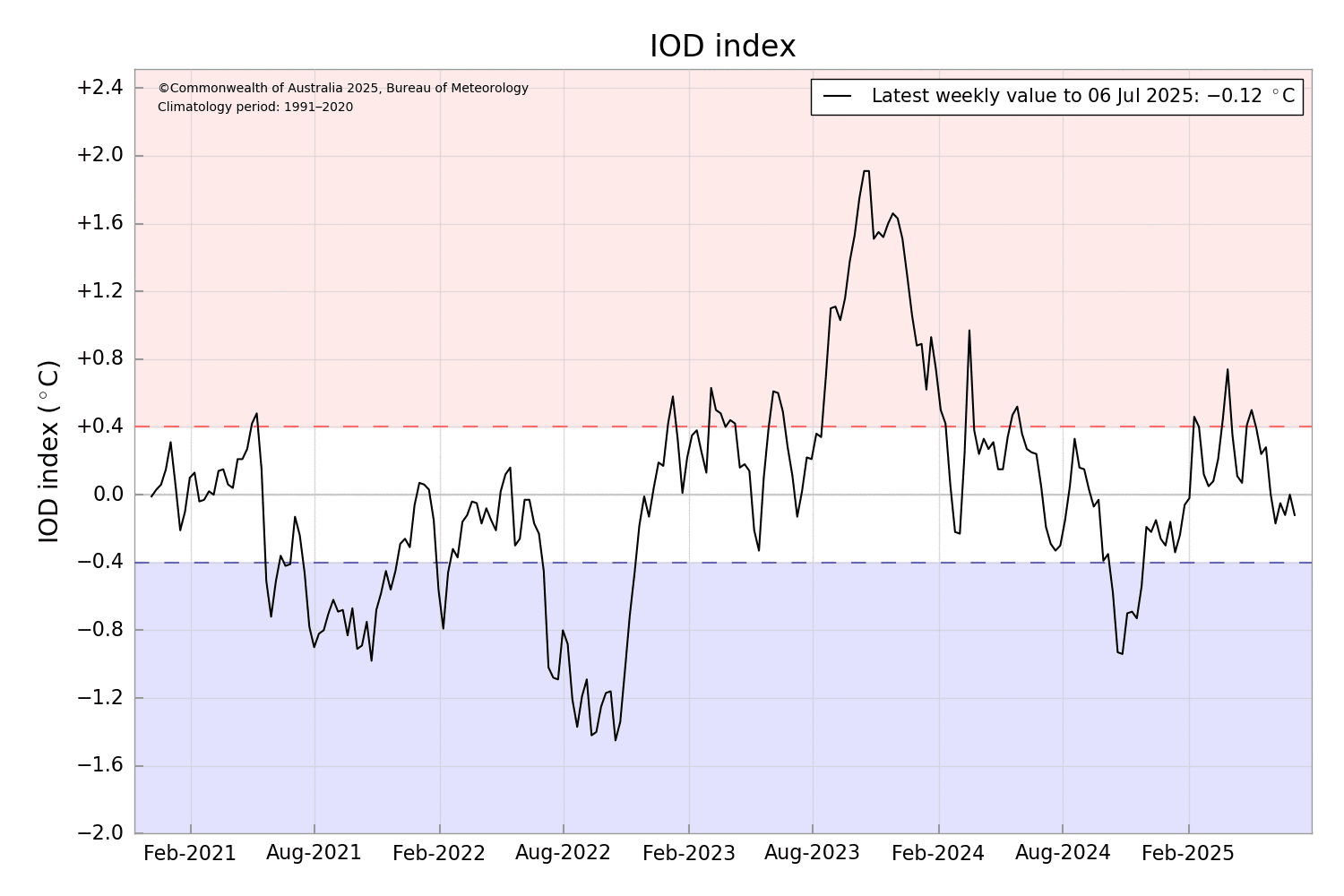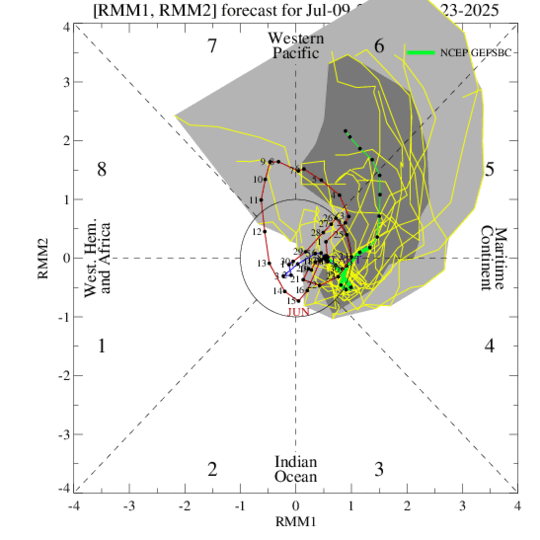Spring Predictability Barrier (SPB)– which is when the models have a harder time making accurate forecasts. SPB is like a lull or a valley in ENSO forecasting accuracy. Spring barrier constraints convey the general idea that the ENSO forecasts are intrinsically more uncertain, or less skillful, in connection with the Northern Hemispheric spring. But how exactly does the ENSO spring barrier work? Does it mean that the future of ENSO is completely uncertain until spring has passed? How bad can the situation turn? At that time of the year, should we start distrusting ENSO forecasts, and when can one start to believe them again?
To start with, why the spring barrier exists – there are no definitive culprits. One of the reasons – because spring is a transition time of the year for ENSO. Spring is when the ENSO is shifting around – often El Niño/La Niña events are decaying after their winter peaks, sometimes passing through neutral, before leading to another El Niño/La Niña later in the year. There is also a weaker coupling between the ocean-atmosphere in the spring due to the reduction in the sea surface temperature gradient in the tropical Pacific Ocean. Also, the signals are low and noise is high for the models around this period. As such, it is harder to predict the start or end of an event than to predict an event that is already occurring. Still, these reasons are not sufficient to explain the lower skills of the models.

ENSO: Equatorial SSTs are near average across most of the Pacific Ocean. ENSO-Neutral is likely in the Northern Hemispheric summer 2025 and may continue into the winter 2025-26, albeit with low confidence, as the chance of Neutral competes with La Niña between Nov–Jan. ENSO-Neutral is the most dubious of all the three categories of ENSO. The overall seasonal rainfall remains susceptible to the neutral conditions and varies abysmally from below normal (93% of LPA in 2012) to above normal (106% of LPA in 2013). At times, it is rather difficult to predict the mood of ENSO and its impact on the monsoon circulation.

All the Niño indices in the equatorial Pacific are steering neutral conditions. Niño 3.4, the marker index, is holding neutral anomalies for the last 21 weeks, since 18th Feb 2025. The Southern Oscillation Index has been consistently recording marginally positive values for the last three months. The average SOI for the month of June was 0.3. The Southern Oscillation is the atmospheric component of ENSO. This component is an oscillation in surface air pressure between the tropical eastern and the western Pacific Ocean waters.

IOD: The Indian Ocean Dipole is neutral. The latest value of the IOD index for the week ending 06th July was -0.12°C. The index was at the same value of -0.12°C on 22nd June 2025. In between, it turned zero-zero on 30th June 2025. The index has steadily decreased during May–June, but remained within the neutral IOD range of +/- 0.4°C. The skill for IOD forecasts made at this time of the year has been historically low beyond two months ahead.

MJO: The Madden-Julian Oscillation remained jumbled during the last fortnight. The pulse meandered over the Indian Ocean in Phase 2 & 3 with minimal amplitude for the last one week. There are indications of amplification during the third week of July when the MJO is expected to propagate to the Maritime Continent in Phase 4 & 5. It may not support any cyclogenesis over the Indian Seas during the 3rd and 4th week of July 2025. In contrast to the Indian Seas, the Western Pacific appears to be poised for a couple of cyclones. Tropical cyclone DANAS, although a weak storm, earlier struck Taiwan and the southeast coast of China. Another tropical depression is brewing over the Sea of Japan.
Without any push or support from the IOD, ENSO, and MJO, the southwest monsoon maintained a good pace. Even after the initial setback due to a long pause, the monsoon activity caught up to race ahead, dumping heavy rainfall over eastern, central, and western parts of the country. Yes, the South Peninsula remained quiet, with the earlier surplus getting consumed now. Monsoon may take a ‘break’ during the 4th week of July as the monsoon trough may shift closer to the foothills.













